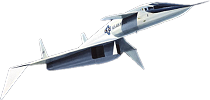
An A-10 takes off from Bagram Air Base, Afghanistan. — AP Photo
Warthog proves its worth in Afghanistan
By Mike Eckel
Associated Press
BAGRAM, Afghanistan — Air Force Capt. Brian Savage had a less-than- dignified reaction when he first flew an A-10 fighter jet called a Warthog.
“I felt like I was driving a dump truck,” said Savage, 28, of the 354th Fighter Squadron from Davis- Monthan Air Force Base near Tucson, Ariz. But the slow- and low-flying Warthog is maligned no more, as it has become the mainstay of the U.S. ground war in Afghanistan.
The stubby-nosed jet is funny looking when compared to the other arrows in the Air Force’s quiver — sleek, pointy-nosed jets like the F-16 or F-15.
But the jet has gone from being an attack aircraft designed to bust tanks and aid ground troops engaged in battle to being the patrolling and pinpoint-attacking fighter plane of the U.S. war.
Eight A-10s are based at Bagram, headquarters for the U.S. military operations in Afghanistan, flying sorties day and night over the arid terrain.
“It’s not the beauty plane on the ramp but it works just fine for us,” said Capt. Rob MacGregor, 30, who’s flown 23 sorties over Afghanistan since arriving six weeks ago.
The jets fly close air support for regular and special operations troops combing Afghanistan for weapons caches and remnants of al-Qaida or the ousted Taliban regime.
Because the few tanks and heavy armored equipment used by the Taliban were quickly destroyed by the U.S. forces last year, the A-10s now patrol the skies looking for rocket launch sites or mortar posts.
“They’ve become the patrolmen on the beat,” said Col. Gregory Marston, 46, who commands the 455th Expeditionary Operations Group overseeing the A-10s and most airfield operations at Bagram.
Just last week, A-10s responding to a call from U.S. special operations troops near the eastern Afghan town of Asadabad dropped two 500- pound bombs and fired hundreds of 30mm explosive rounds at a suspected enemy target. It’s unknown whether there were any casualties from the attack.
The A-10s, which cost about $9 million each, are designed to loiter just hundreds of feet over the battlefield at a relatively slow speed of 200 mph — more than 300 mph slower that their British-built counterparts, the Harrier jet.
To compensate for the relative lack of speed, designers clad the pilot’s cockpit in a 900-pound “titanium bathtub” able to withstand most anti- aircraft fire. Self-sealing fuel tanks guarantee the aircraft will not explode if shot. The jets will also fly if the hydraulic systems are damaged and will stay airborne long enough for the pilot to eject if a wing is shot off.
“It’s more vulnerable, but it’s built to take a lot,” Savage said.
Each plane carries an arsenal that includes heat-seeking missiles, 500- to 2,000-pound bombs, laser-guided bombs and a Volkswagen-sized Gatling cannon that can fire nearly 4,000 rounds a minute. If tanks are the target, the jets fires ammunition tipped with depleted uranium.
When they were first designed in the 1970s, the A-10s were an unwelcome addition to the Air Force arsenal. Air Force officials prized the high-flying, high-performance F-15 and F-16 jets, and were determined to leave the dirty work of close air support to Army helicopters.
But the plane was kept alive by the work of some Air Force analysts, along with the support of the late Rep. Joseph Addabbo, who represented the Farmingdale, N.Y., district where the A-10s were built.
In 1991, the planes proved their mettle in the Persian Gulf War, destroying more than 1,000 tanks, 2,000 military vehicles and 1,200 artillery pieces. According to several reports, pairs of A-10s destroyed 20 or more tanks in a single day. Five A-10s were shot down during the war, far fewer than military planners expected.
In the 1980s, military planners intended the A-10s to fly low, slow missions to counter divisions of Soviet tanks stationed in eastern Europe.
In Afghanistan, however, the jets operate at higher altitudes, out of range of surface-to-air missiles and anti-aircraft fire. They maintain a vigil for combat troops, now that operations have turned from large-scale bombing to pinpoint raids. No A-10s have been shot down and few have even been damaged.
“It’s a warhorse. It’s not a pretty thing but it’s effective and that’s saved it from the boneyard,” Marston said.




